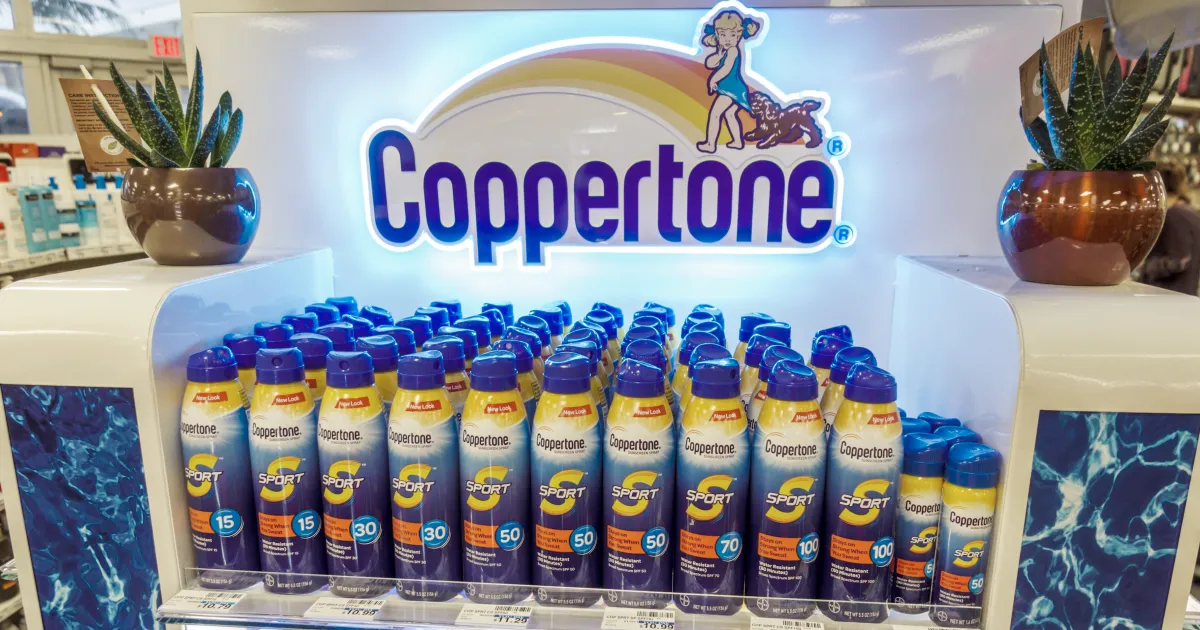Trademark registration is an essential step for any business seeking to protect its brand identity and intellectual property. However, the process of trademark registration can be challenging, particularly when a mark falls into the gray area between being descriptive or suggestive.
In Vietnam, Laos, and Cambodia, as in many other countries, trademarks that are deemed purely descriptive are not eligible for protection under trademark law but a suggestive mark may be eligible for registration and protection. However, determining whether a mark is descriptive or suggestive can be a challenging and subjective task, and there is often a thin line between the two. Therefore, it is important to understand the examination practice of determining the eligibility of trademarks and the factors that examiners consider when making such a determination.A suggestive sign or descriptive mark in Vietnam, Laos and Cambodia
A suggestive sign is a type of trademark that suggests or alludes to a quality or characteristic of the goods or services it represents. A suggestive mark is a type of trademark that is more distinctive than a descriptive mark, but less distinctive than a fanciful or arbitrary mark.
Suggestive marks suggest but do not directly describe, a quality or characteristic of the products or services being offered. A suggestive sign requires some level of imagination or creativity from the consumer to understand the connection between the sign/mark and the product or service. For example, the trademark "Greyhound" for a bus company suggests speed and efficiency but does not directly describe the product or service offered.
A suggestive sign can usually be registered as a trademark, but there are instances where a suggestive sign might be refused registration if it is too closely related to the product or service it represents. This is because a suggestive sign can be seen as a descriptive term if it is too easily associated with the product or service. In such cases, the trademark office might require that the mark be used for a certain period of time to acquire secondary meaning before it can be registered as a trademark.
For example, the mark "Coppertone" for sunblock suggests that the product will protect the skin from the sun, without directly describing the product's function.
Similarly, the mark "Netflix" suggests the concept of watching films on demand over the internet, without directly describing the service offered. Suggestive marks are considered to be inherently distinctive and are entitled to a higher level of legal protection than descriptive marks.
The line between a suggestive mark and a descriptive mark in Vietnam, Laos and Cambodia.
The line between a suggestive mark and a descriptive mark can be thin and subjective, as it depends on how much imagination or thought is required to make a connection between the mark and the product or service it represents.
A suggestive mark is one that suggests or hints at the product or service it represents, but requires consumers to use their imagination or perception to make the connection. Suggestive marks are usually more distinctive and can be protected under trademark law, as they require some level of creativity or originality on the part of the mark owner.
On the other hand, a descriptive mark directly describes the product or service it represents and does not require much imagination or thought to make the connection. Descriptive marks are usually not distinctive and are generally not protected under trademark law, unless they have acquired secondary meaning through extensive use and recognition by consumers.
Thus, the key factor in determining whether a mark is suggestive or descriptive is the level of imagination required to understand its connection to the product or service it represents. However, this can be a subjective assessment and can be open to interpretation by different parties, including trademark examiners, brand owners, and competitors.
In general, the more imagination or mental processing required to make the connection between the mark and the product or service, the more likely the mark is to be considered suggestive rather than descriptive.
However, there is often a fine line between the two, and the classification of a mark can depend on various factors such as industry norms, consumer perception, and the overall context in which the mark is used.

The way that an applied-for mark is considered suggestive if viewed in context, rather than in isolation.
The context in which a mark is used can play a critical role in determining whether it is considered suggestive or descriptive. A mark that might seem descriptive when viewed in isolation could be considered suggestive when viewed in context with other elements of the brand or product, such as packaging, advertising, or other marketing materials.
For example, the mark "Red Bull" might seem descriptive when viewed in isolation, as it contains two common words that describe the product (a drink that gives you energy). However, when viewed in the context of the brand's marketing materials and packaging, which prominently feature the image of a charging red bull, the mark becomes more suggestive. It suggests not only the product's energy-boosting properties but also a sense of power and strength.
Similarly, the mark "Amazon" might seem descriptive when viewed in isolation, as it refers to a geographical location and could be interpreted as suggesting a wide variety of products, like a vast rainforest.
However, when viewed in the context of the brand's marketing and advertising, which emphasize the company's broad selection of products and services, the mark becomes more suggestive.
In another example, the mark "Apple" for a company that sells computers and electronics may appear to be a descriptive mark when viewed in isolation. However, when viewed in context, such as in advertisements that use imagery or wordplay to suggest a connection between the mark and the products it represents, it may be considered a suggestive mark.
In general, the more unique and distinctive the mark is, the more likely it is to be considered suggestive rather than descriptive, even when viewed in isolation. However, the overall context in which the mark is used can be an important factor in determining its classification.
Evidence that consumers perceive an applied-for mark as suggestive rather than descriptive in Vietnam, Laos and Cambodia.
When determining whether a mark is suggestive or descriptive, one important factor to consider is consumer perception. In order for a mark to be considered suggestive, it must require consumers to use their imagination or perception to understand its connection to the product or service it represents.
Therefore, evidence that consumers perceive the mark as suggestive rather than descriptive can be used to support an argument that the mark is not merely descriptive and is eligible for trademark protection.
This evidence can be gathered through consumer surveys, or other market research techniques that aim to gauge consumer perception of the mark. The results of such research can provide insight into whether consumers view the mark as requiring imagination or perception to understand its connection to the product or service it represents, and can help establish the mark's strength and distinctiveness.
However, it is important to note that consumer perception is just one factor among many that are considered when evaluating whether a mark is suggestive or descriptive, and the ultimate determination depends on a variety of legal and factual considerations.
Type of evidence should be provided to establish that an applied-for mark is suggestive, but not descriptive in Vietnam, Laos and Cambodia.
To establish that a mark is suggestive, but not descriptive, the following types of evidence could be helpful:
- Evidence of consumer perception: This can include surveys, or other forms of consumer feedback that demonstrate that the mark is not immediately descriptive, but requires some degree of imagination or perception to understand its connection to the product or service it represents.
- Evidence of advertising or marketing: If the mark has been used in advertising or marketing materials, these materials can be examined to determine whether they suggest a relationship between the mark and the product or service, or whether they simply describe the product or service itself.
- Industry recognition: Evidence that the mark has received industry recognition as a suggestive mark rather than a descriptive mark.
- Evidence of the mark's history: Evidence of the mark's history, including how it was chosen, how it has been used, and how it has been received by consumers, can also be used to support an argument that the mark is suggestive.
- Linguistic analysis: An analysis of the language and meaning of the mark to demonstrate that it requires a level of interpretation or perception to understand its connection to the product or service.
It is important to note that:
- (i) the strength of the evidence required to establish that a mark is suggestive, but not descriptive, will depend on the specific facts and circumstances of each case, as well as the legal standard applied by the relevant authorities and
- (ii) not all of these types of evidence may be available or applicable in every case, and the specific evidence required to establish that a mark is suggestive will depend on the facts and circumstances of each case. Ultimately, the decision on whether a mark is suggestive or descriptive will be based on a holistic analysis of all the evidence presented.
How an examiner will reach a conclusion that a mark should be deemed descriptive or suggestive in Vietnam, Laos and Cambodia.
When evaluating whether a mark is descriptive or suggestive, an examiner will typically consider a variety of factors to determine the overall impression created by the mark. Some of the key factors that an examiner may take into account include:
- The dictionary definition of the words or terms used in the mark: If the words or terms used in the mark have a clear and direct connection to the goods or services being offered, it may be more likely that the mark will be deemed descriptive.
- The context in which the mark is being used: If the mark is being used in an industry where certain words or terms are commonly used to describe the goods or services being offered, this may make it more difficult for the mark to be considered suggestive.
- The level of imagination or perception required to connect the mark to the goods or services being offered: If the mark requires consumers to use their imagination or perception to understand its connection to the product or service it represents, it is more likely to be considered suggestive.
- The existence of similar marks in the same industry: If there are other marks in the same industry that use similar words or terms to describe the goods or services being offered, this may make it more difficult for the mark to be considered suggestive.
- Evidence of consumer perception: If there is evidence that consumers perceive the mark as suggestive rather than descriptive, this may support an argument that the mark should be considered suggestive.
In light of the foregoing, the examiner will evaluate these factors and other relevant evidence to reach a conclusion about whether the mark should be deemed descriptive or suggestive.
Overall impression in trademark examination principles in Vietnam, Laos and Cambodia.
When evaluating a mark, it is important to consider the overall impression it creates when viewed as a whole, rather than focusing solely on its individual components. This means that the mark should be evaluated as a complete entity, rather than breaking it down into separate parts. Therefore, in case you apply to register your trademarks in Vietnam, Laos and Cambodia and your mark is deemed descriptive rather than suggestive, it is helpful for you to emphasize about the overall impression that your mark creates. This includes not only the individual elements of the mark but also how those elements work together to create a unique impression. To strengthen their case, you are advised to emphasize how your mark creates a unique impression by providing evidence and argumentation that demonstrates how your mark requires consumers to use their imagination or perception to understand its connection to the product or service it represents.
By highlighting these factors, you may build a strong case for why your mark should be considered suggestive rather than descriptive, and thus eligible for trademark protection in Vietnam, Laos or Cambodia.










